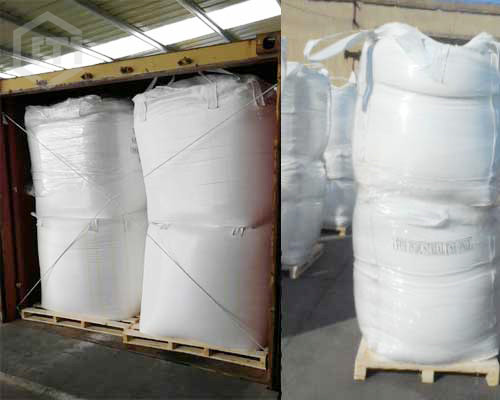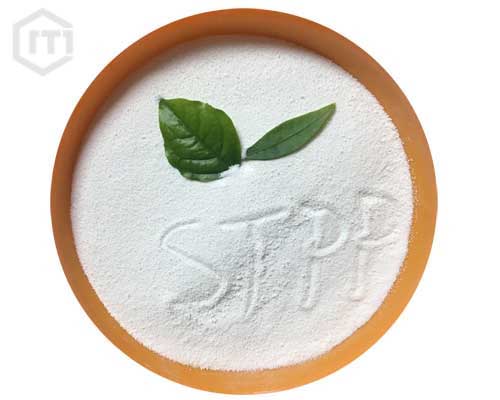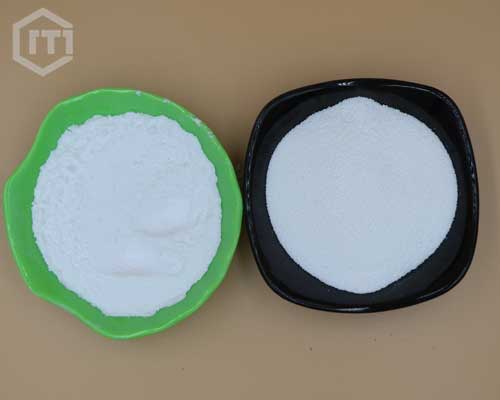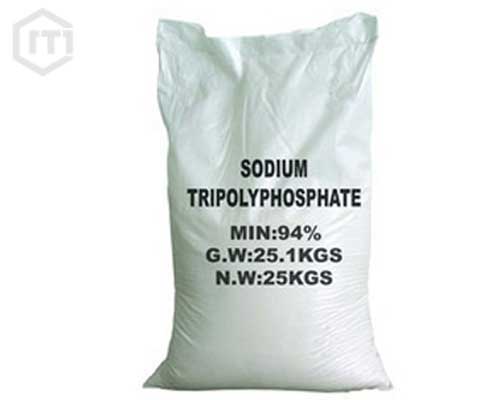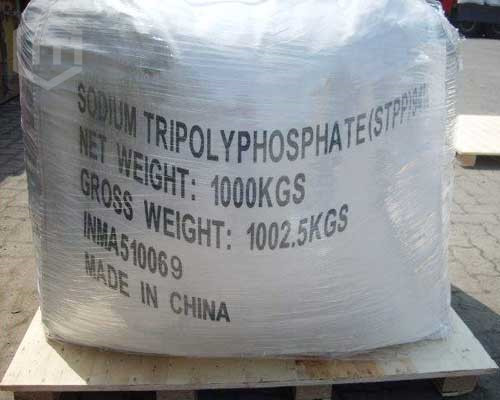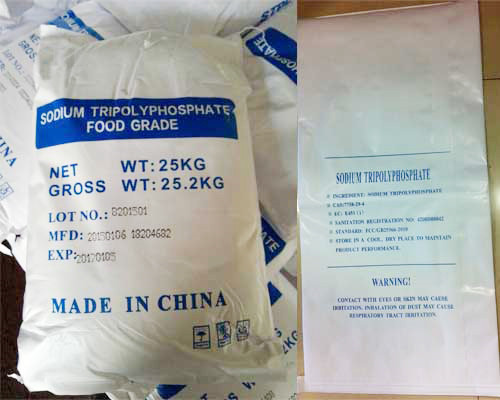| Item | Industrial grade | Food grade |
|---|---|---|
| Main contents (Na5P3O10 )%≥ | 94.0 | 94.00 |
| Phosphorus pentoxide(P2O5) %≥ | 56.5 | 57.0 |
| Water insoluble %≤ | 0.15 | 0.10 |
| Fe %≤ | 0.015 | 0.015 |
| PH value of 1% solution | 9.2-10.0 | 9.4-10.0 |
| Heavy metals, as Pb %≤ | / | 0.001 |
| Arsenic,as As %≤ | / | 0.0003 |
| Fluoride, as F %≤ | / | 0.003 |
| Whiteness %≥ | 85 | 85 |
STPP Chemical is formed by condensation of different sodium hydrogen phosphate molecules, which has a full name of sodium tripolyphosphate. Because there are five sodium stoms in its molecule(Na5P3O10), it is also known as pentasodium triphosphate. STPP powder is mostly used in synthetic detergents, and a few are used in the food processing industry and softening treatment of industrial water.
Types of STPP Chemical
According to the structure and shape, it can be divided into white powdery anhydrous(Na5P3O10) and hexahydrate with the appearance of rectangular parallelepiped crystals(Na5P3O10.6H2O). Anhydrous stpp chemical also contains two crystalline forms, type I (high temperature) and type II (low temperature). They have the same chemical properties. The difference is that type I has higher thermal stability and hygroscopicity than type II, and both have different solubility and hydration heat when dissolved.

STPP Chemical Uses And Features
IN fOOD
Food grade STPP can be used as water retention agent, quality improver, PH value regulator, metal chelating agent. Meat products. Improve water retention and coagulability, prevent fat oxidation. Beverages. Increase juice yield of juice drinks, as well as increase viscosity, inhibit vitamin C decomposition. Soy sauce. Prevent discoloration, increase viscosity, shorten fermentation period, adjust taste. Dairy products. Prevent gel precipitation. Ice cream. Improve swelling capacity, increase volume, enhance emulsification to prevent paste damage, improve taste and color. Cans. Stable natural pigment, maintain food color and luster. Beer. Clarify liquor, prevent turbidity, improve beer taste.
In Detergent
STPP detergent grade is always be used in various forms of detergents, such as, washing powder, washing liquid, soap.STPP has excellent washing performance, which is actually the combined effects of multiple functions, such as, soft water, dispersion, emulsification, anti-redeposition and PH buffering. Ant it also has strong decontamination ability in the condition that doesn’t add detergent.
Features
STPP is a comprehensive metal complexing agent and inorganic builder.
STPP isn’t easy to absorb moisture, isn’t easy to hydrolyze, and its stability is better than sodium hexametaphosphate.
STPP has a synergistic effect on the detergency of surfactants.
STPP can be used in various water-phase processing processes in silk production.
Preparation Principle of STPP Chemical
Sodium tripolyphosphate is produced by neutralizing and dehydrating the thermal phosphoric acid or wet process phosphoric acid with soda ash or caustic soda. The preparation reaction is mainly neutralization and condensation polymerization.
Neutralization reaction mechanism
Sodium phosphate solution can be prepared by neutralizing phosphoric acid with soda ash. The reaction formula is 6H3PO4 + 5Na2co3 → 4Na2HPO4 + 2NaH2PO4 + 5CO2↑ + 5H2O
If thermal phosphoric acid is used, since its purity and concentration are relatively high, no purification is required, and the neutralization solution can be directly polymerized. If wet-process phosphoric acid is used, because it contains SO42-, H2SiF6, Fe2O3.4H3PO4, Al2O3.4H3PO4, CaH4(PO4)2. Various reactions occur during neutralization.
For the neutralization of wet-process phosphoric acid, if phosphoric acid is neutralized and extracted with soda ash to the PH value from 4.2 to 5.0, the precipitation of sodium fluorosilicate is the most complete. Recovery of sodium fluorosilicate is used to produce various fluorine compounds. First separation and then neutralization is conducive to the reduction of fluorine content in the solution and the preparation of high quality STPP chemical. For SO42 ions, BaCO3 can be used to remove it. If use the method of solvent extraction and neutralization, calcium, magnesium, aluminum and fluoride in wet phosphoric acid can be better removed. In the process of phosphoric acid neutralization, controlling the degree of neutralization is a necessary condition for the produce STPP to achieve quality standards.
Polycondensation reaction mechanism
Sodium tripolyphosphate can be prepared by dehydrating polycondensation of qualified sodium phosphate mixed solution at the degree from 350℃ to 402℃. When the temperature is 180-290℃, the orthophosphate is the first condensed to pyrophosphate. When the temperature rises to 290-310℃, pyrophosphate will be polycondensed into sodium tripolyphosphate. In order to make the polycondensation reaction faster, the reaction temperature is usually controlled at 350-400℃.
The main factors affecting the polycondensation reaction
1.The ratio of sodium and phosphorus. Accurate control the neutralization degree to make Na2O/P2o5 = 1.67. This is the necessary condition to prepare the qualified STPP chemical, also the important factor affecting the reaction of polycondensation.
2.Temperature. Experiments show that the higher the temperature, the shorter the time required to complete the polycondensation reaction.
3.Catalyst. Adding 0.5%-1% NH4NO3 to the refined neutralizing liquid as catalyst can accelerate the formation of stpp chemical and make the polycondensation reaction proceed at a lower temperature.

